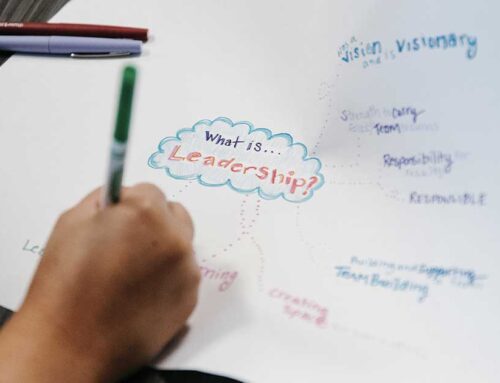 Mythbusting in Arts Education
Mythbusting in Arts Education
AEC staff members often encounter what we call “urban myths” of education. Many of these myths are the product of years, if not decades, of received wisdom in formal education. Among the more persistent myths we hear are “reading and math must be taught every day” or “we’re not required to assess student progress in the arts.”
Yet neither of these statements is true.
During our work with educators, AEC often takes first steps into the world of advocacy by sharing information and facilitating discussions about policy requirements for arts education that help dispel these myths. Since we can’t always be in the room with arts education advocates, we are including some of the resources we’ve been sharing with educators here in this article to shape discussions about how to bridge the gap between what is and what should be offered in schools.
Pennsylvania Code, Title 22 (Education) outlines the regulations governing public schools in Pennsylvania. In our state, local school boards make many of the decisions affecting graduation requirements, course offerings, and instructional time. State-level policy provides loose guidelines, which are then interpreted by policymakers at the local level.
PA Code Title 22 §4.21 (Elementary education), §4.22 (Middle-level education), and §4.23 (High school education) outline the requirements for instruction in all content areas (see Table 1). Elementary is further separated into primary and intermediate. Educators we work with are often surprised to learn that regulations don’t treat state-tested content areas (e.g. math, English language arts, science) any differently than other academic content areas like the arts.
The phrases must be provided and must be offered are important. Must be provided means that every student at the specified grade level must have learning experiences in these content areas. In our experience, most schools fall short of this goal, especially with dance and theatre. Must be offered means that every student must have the chance to engage in these learning experiences if they choose to do so.
Every level of instruction (elementary, middle, and high school) also includes statements that “planned instruction may be provided as a separate course or other interdisciplinary activity” and “this section does not preclude the teaching of other planned instruction designed to achieve a school entity’s academic standards.” While this does not preclude the teaching of the arts by, for example, an ELA teacher or elementary school librarian, it does mean that these educators must still meet all standards in a given subject area. “Other planned instruction” may go above and beyond academic standards, but must still meet these minimum requirements.
Per the guidelines above, regulations would permit all of the following scenarios:
- Students in an elementary school have homeroom teachers who teach English language arts, math, science (including environment and ecology), and social studies in separate blocks of time. Students go to other rooms and teachers for physical education, music, and visual arts. Homeroom teachers integrate some theatre strategies into English language arts, and physical education teachers include some dance and creative movement in their instruction.
- Students in a high school go to a different classroom and teacher for a course every 42 minutes. From grades 9-12, students are required to take at least one course in English language arts, math, science and technology, social studies, environment and ecology, dance, music, theatre, visual arts, computer, health/physical education, and family and consumer sciences. All other courses are elective, and for most of their courses, students can choose those that meet their needs and interests.
- Students’ days at all levels consist of large blocks of time scheduled with teams of teachers who are certified in different disciplines. Students work on projects that cross disciplines and can consult with teachers as needed. These projects range from writing and staging a musical to 3D printing and building a microscopy camera. Teachers provide guidance and push students to try new ideas and find new resources. At the secondary level, students travel once a week to a community partner organization that connects with their project.
In addition to instruction, regulations also outline requirements for student assessment. PA Code Title 22 §4.52 (Local assessment system) requires all districts to design a local assessment system for content areas not tested by PSSAs or Keystone Exams. The assessment system must be designed to:
- Determine the degree to which students are achieving academic standards.
- Use assessment results to improve curriculum and instructional practices and to guide instructional strategies.
- Provide summary information, including results of assessments under this section, to the general public regarding the achievement of students.
School districts are required to provide assistance to students who are not proficient on this local assessment, and the local school board is required to approve the assessment system at least once every six years. The assessment system might include:
- Written work by students.
- Scientific experiments conducted by students.
- Works of art or musical, theatrical or dance performances by students.
- Other demonstrations, performances, products or projects by students related to specific academic standards.
- Examinations developed by teachers to assess specific academic standards.
- Nationally-available achievement tests.
- Diagnostic assessments.
- Evaluations of portfolios of student work related to achievement of academic standards.
- Other measures as appropriate, which may include standardized tests.
Without a balanced education that includes significant time for learning in the arts, we deny students the chance to strengthen critical thinking, foster creativity, enhance writing quality and early reading skills, improve fine motor skills, foster superior working memory and vocabulary, sharpen attentiveness, and obtain other skills and dispositions that will have positive long-term effects on their lives. We have a vision where all students in our region benefit from rich and meaningful arts learning opportunities that meet or exceed state policies. Please join us in working towards this vision. We encourage you to use the information in this post to advocate for arts education in your context and to let us know how we can best support your efforts.
Sources: Visual Arts Matter: How Visual Arts Education Helps Students Learn, Achieve, and Thrive and Music Matters: How Music Education Helps Students Learn, Achieve, and Succeed. Title photo credit Sharon McCutcheon.







